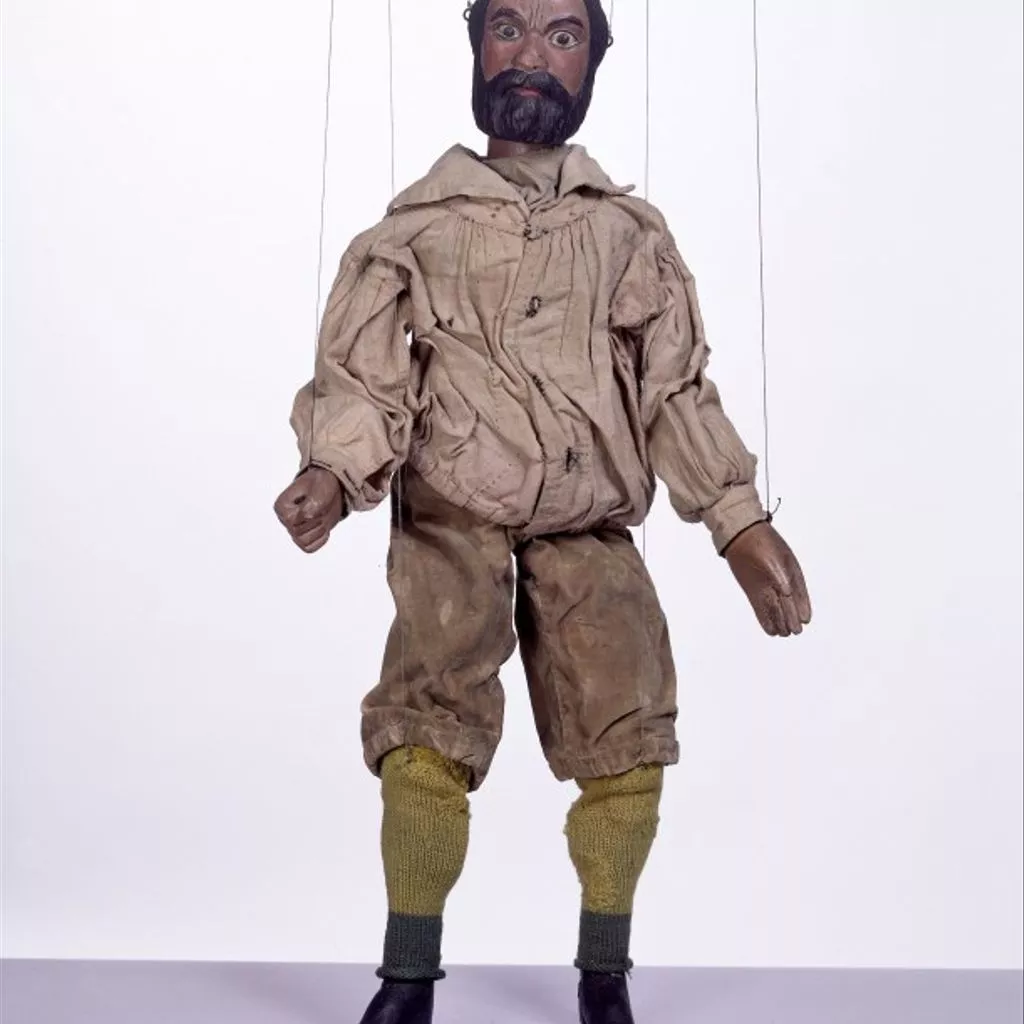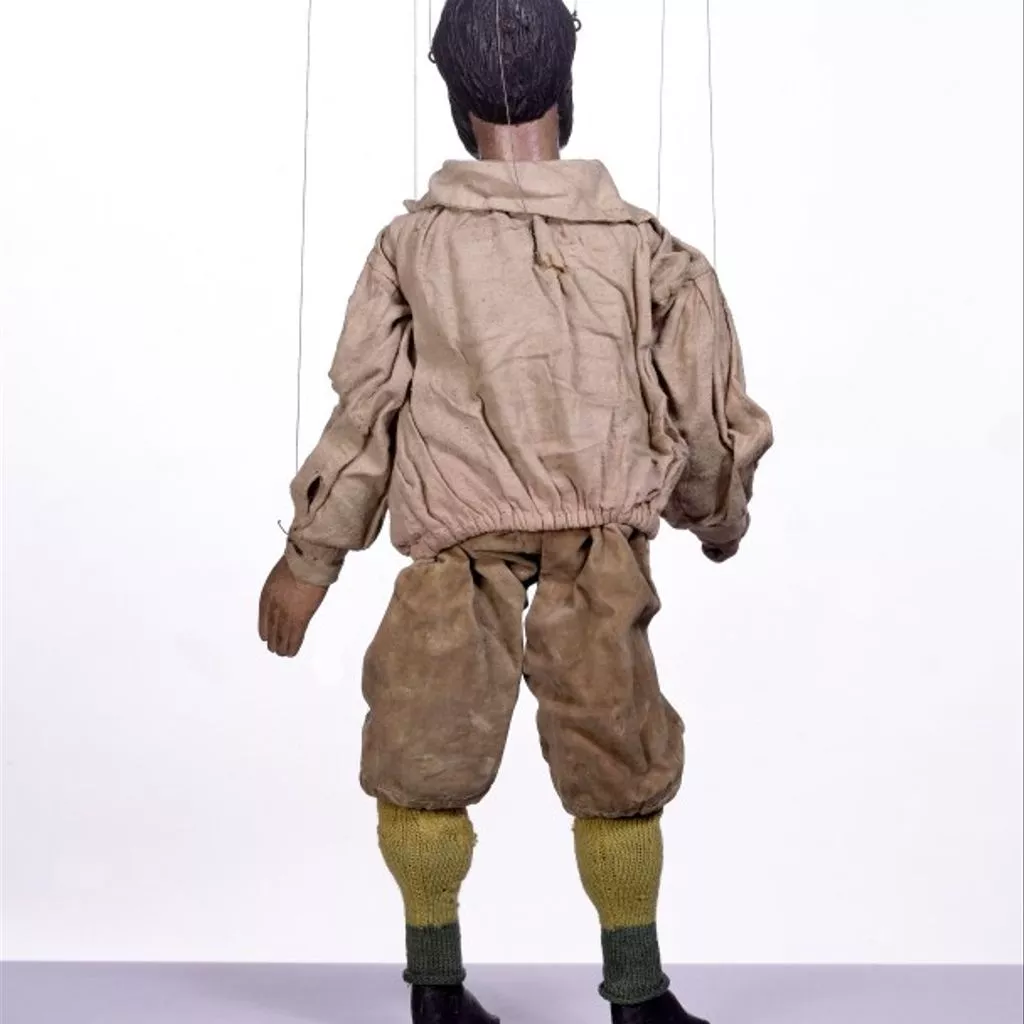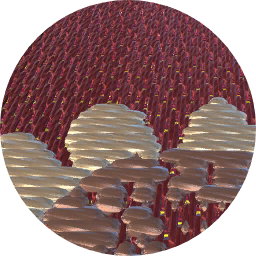Description
Unique
Carved wooden marionette from the Tiller troupe. Stock character representing an honest working man or male lead (popular class). Made by the Tiller family circa 1870 to 1890.
Carved wooden marionette; a male lead type (popular class) or honest workman, wearing beige velvet corduroy knee-length trousers and a cream brushed cotton blouson shirt with smocking at the yoke and at the top of the sleeves. He wears specially knitted green and mustard yellow woollen stockings. He has carefully carved hair and beard, painted black, a slightly brown-tinted face, and painted eyes with black dots for pupils. His right hand is shaped to hold a prop while his left hand is open for gesture. His legs are attached from cotton tubes and the lower leg is attached by a tongue into a hollow in the upper leg.
One original control bars, and one replacement made for the 1999 performance of Maria Marten, or The Murder in the Red Barn. There is a string between the shoulders.
This is one of 35 marionettes from the Tiller-Clowes troupe, one of the last Victorian marionette troupes in England. Marionette shows were a popular form of entertainment for adults in the 19th century, many of them family concerns which travelled around the country long before the advent of film and television, presenting shortened versions of London's latest popular entertainment from melodramas and pantomimes to minstrel shows and music hall. In the 18th and early 19th centuries their theatres were relatively makeshift, but after about 1860 many became quite elaborate, with walls constructed from wooden shutters, seating made from tiered planks of wood, and canvas roofs.
The figures were carved, painted, dressed and performed by members of the company. This is a leading working-class male who would have been a stock character, used in any play requiring an honest workman. His hair and beard are carefully carved, and his face has been painted in a slightly brown colour, as if to indicate that he works out of doors. His right hand has been carved closed to hold props, the other shaped for gesture.








